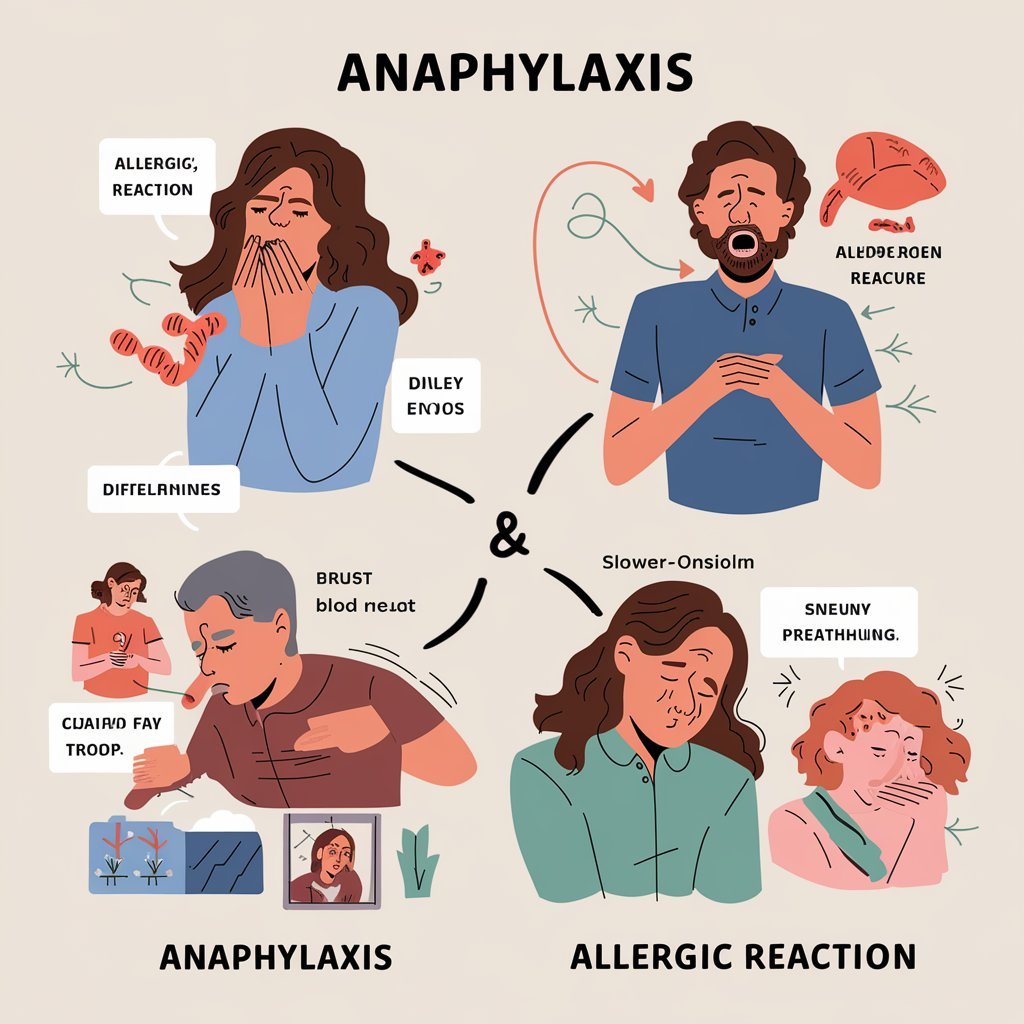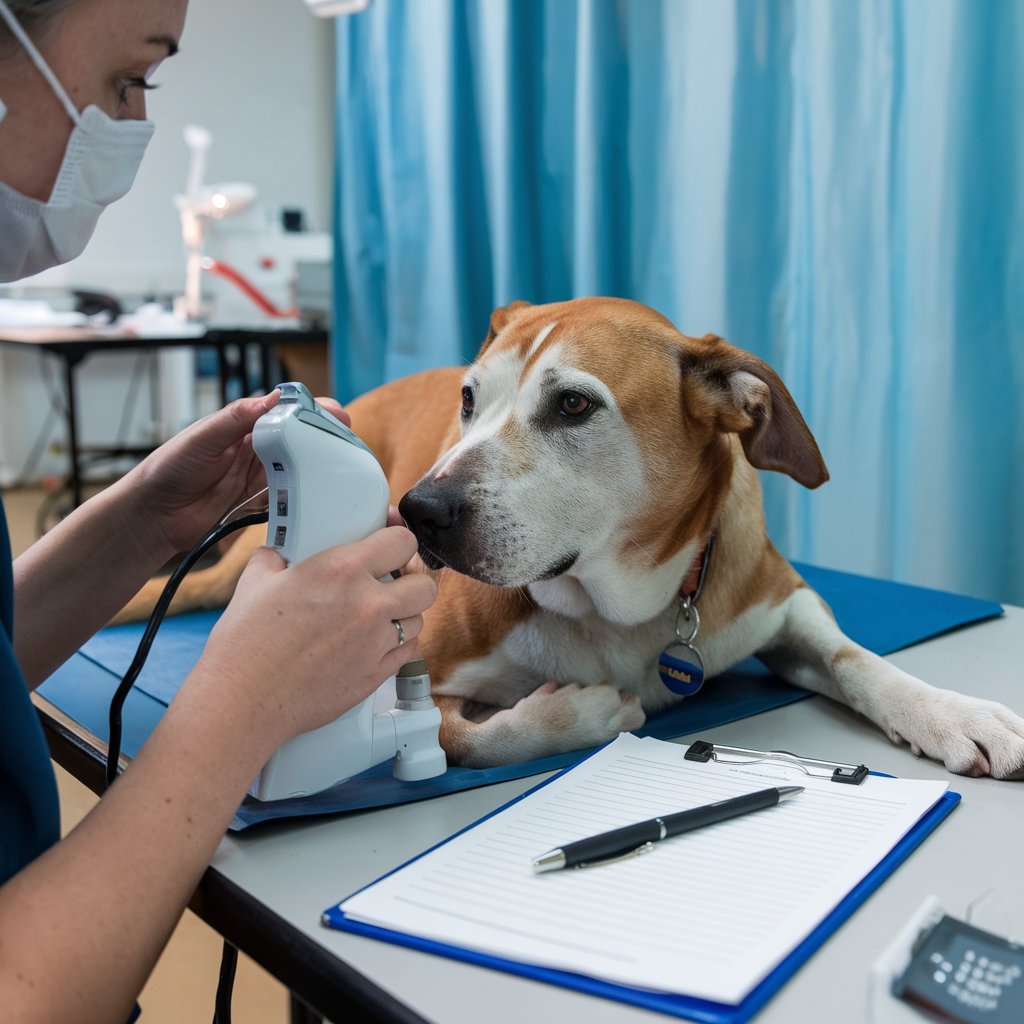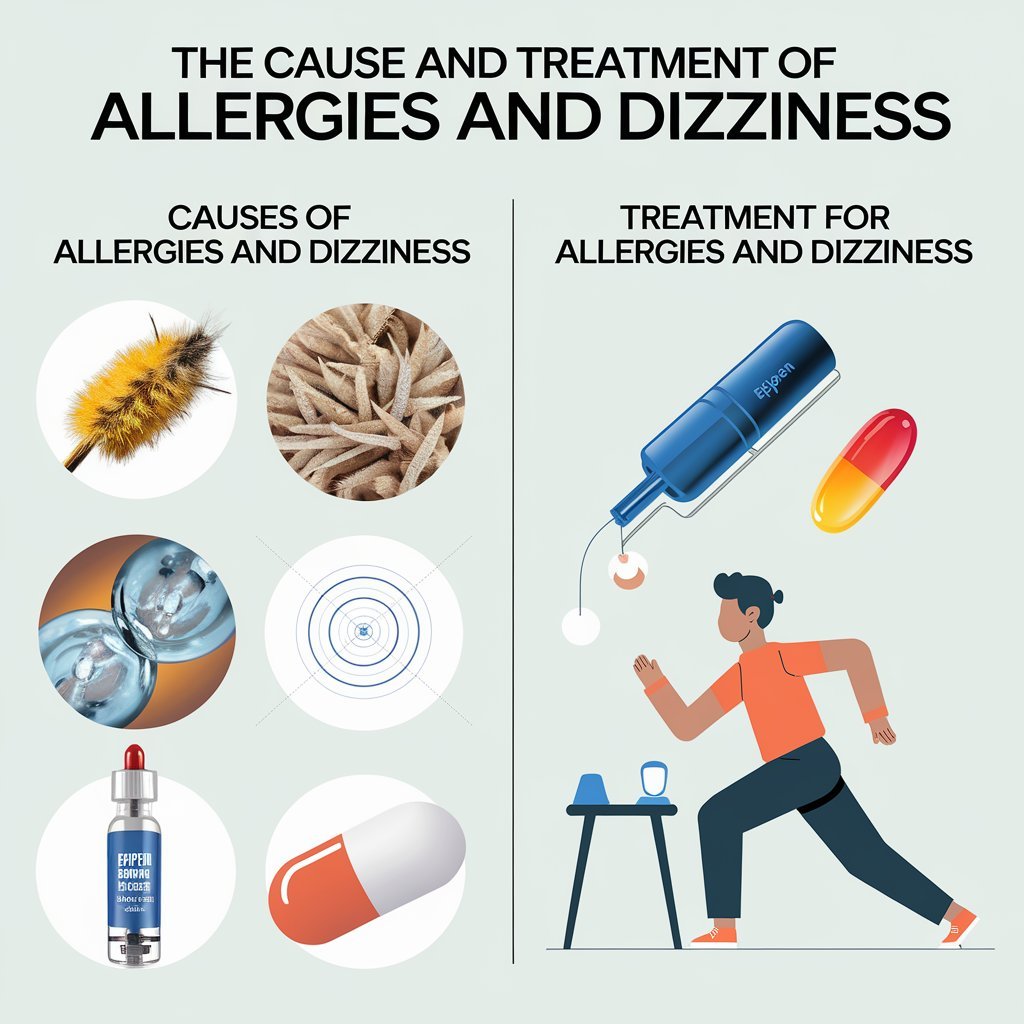Allergic reactions and anaphylaxis result from a sensitivity to an allergen. Allergens are substances that trigger an immune response, ranging from a runny nose to shortness of breath. Allergic reactions occur when someone touches, swallows, or breathes in an allergen. Common causes of allergic reactions include certain foods, medications, and insect bites or stings. Anaphylaxis is an acute, severe type of allergic reaction.
Most allergic reactions are slight and can be controlled even at home. Symptoms would include a running nose, watery eyes, or rashes. There are various degrees of anaphylaxis, depending on the severity and the organs affected. It is often life-threatening, thus requiring immediate medical attention. Signs of anaphylaxis include skin flushing, swelling, itching, and difficulty in breathing.
Symptoms of Anaphylaxis vs. Allergic Reaction
The symptoms of allergic reactions and anaphylaxis are similar in many ways since they both are an allergic response by the immune system. The allergic reactions cause mild symptoms that may include a runny nose. Anaphylaxis is a severe allergic reaction.

Early detection of anaphylaxis symptoms is very important. Anaphylaxis is a medical emergency and needs immediate treatment. Anaphylaxis and allergic reactions can begin with mild symptoms. If you think you or someone else is experiencing anaphylaxis, you should follow the emergency plan provided and call 911.
Differences
Anaphylaxis is an extremely serious and potentially life-threatening allergic reaction. The main differences between allergic reactions and anaphylaxis are their severity and treatment options.
An Allergic Reaction is Much Commoner
Allergic reactions are common and usually cause mild to moderate symptoms including a rash or runny nose. A life-threatening anaphylaxis is much less common than a mild or moderate allergic reaction.
Anaphylaxis Affects All Body Systems
Anaphylaxis is a dangerous, systemic reaction to an allergy, while mild to moderate is not a system-wide reaction. A mild to moderate reaction causes skin manifestations of a rash, and respiratory signs of congestion.
Areas where anaphylaxis is generally manifested:
- Respiratory system: Wheezing, cough, shortness of breath
- GI system: Stomach aches, nausea, vomiting
- Heart: Dizziness, weakness, faints due to low blood pressure
- Skin: Redness, itching, swelling
Various Treatment Alternatives
Treatment for an allergic reaction depends on the severity. You can manage a mild to moderate allergic reaction at home, and it may require the following treatments:
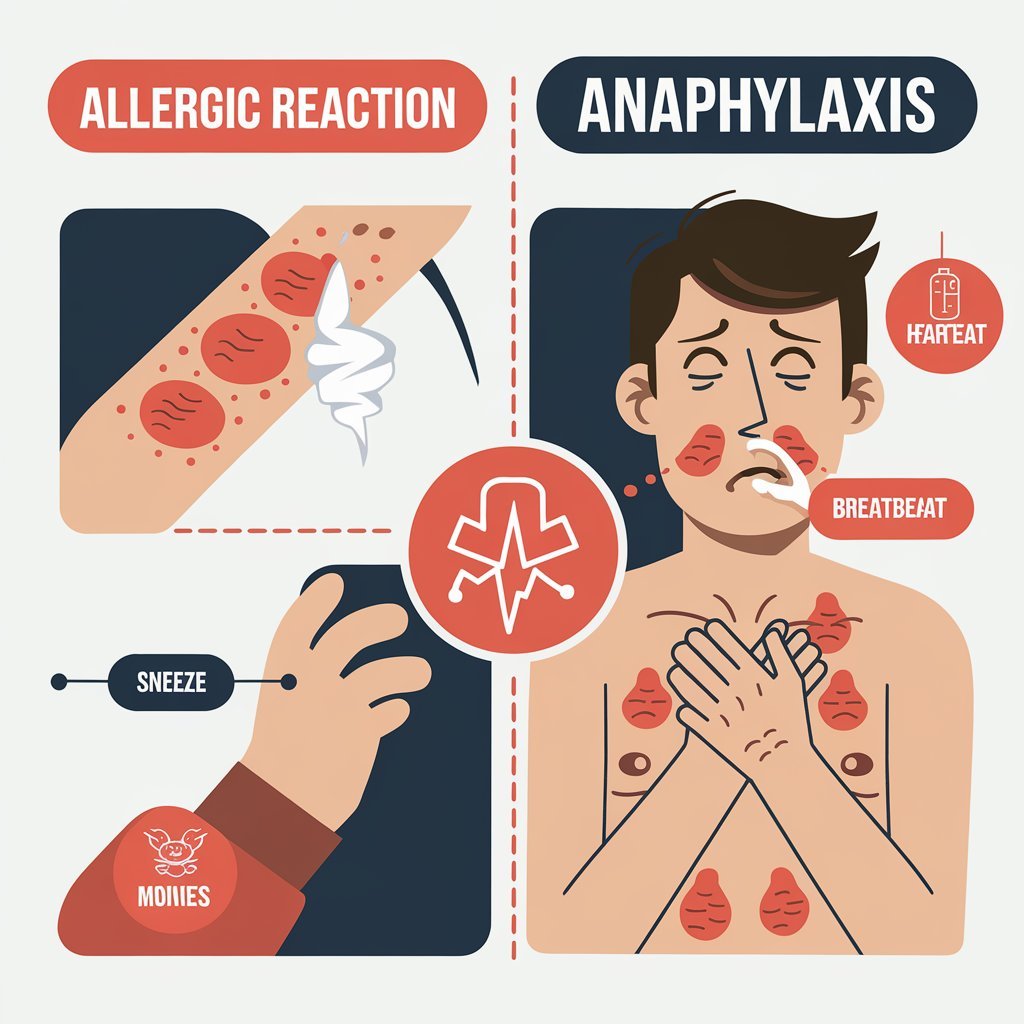
- Apply a cool compress or over-the-counter (OTC) topical hydrocortisone cream for an itchy rash
- Take an oral (by mouth) antihistamine like Benadryl (diphenhydramine)
- Observe for worsening symptoms
Anaphylaxis is an emergency condition requiring immediate treatment. If you or the person with you is having anaphylaxis symptoms, call 911. Anaphylaxis treatment might include:
- Epinephrine (adrenaline) to open the airways
- Corticosteroids to reduce the severity and duration of the allergic reaction (for example, methylprednisolone or hydrocortisone)
- Antihistamines to reduce the body’s immune response (for example, diphenhydramine)
- Bronchodilators to further open the airways (e.g., albuterol or an ipratropium bromide and albuterol combination)
Anaphylaxis is an emergency condition requiring immediate treatment. If you or the person with you is having anaphylaxis symptoms, call 911. Anaphylaxis treatment might include:
Epinephrine (adrenaline) to open the airways
- Corticosteroids to reduce the severity and duration of the allergic reaction (for example, methylprednisolone or hydrocortisone)
- Antihistamines to reduce the body’s immune response (for example, diphenhydramine)
- Bronchodilators to further open the airways (e.g., albuterol or an ipratropium bromide and albuterol combination)
Similarities
Anaphylaxis is a form of allergic reaction, and both conditions have similar causes. Work with your healthcare provider to determine a treatment plan for any type of allergic reaction.
Both Conditions Are an Allergic Reaction
An allergic reaction is any hypersensitivity reaction from the immune system. The immune system reacts when exposed to a substance it is hypersensitive to. Anaphylaxis is one type of allergic reaction.
Food, medication, or bites/stings of certain insects
- Among the commonest causes are the sting of bees and fire ants, latex, certain drugs, and foodstuffs
- Most food allergy comes in peanuts, tree nuts, fish, shellfish, milk, eggs, wheat, spelt, rye, barley, soy, red meat, and sesame
- Allergies are brought by medications including penicillin, aspirin, and nonsteroidal anti-inflammatory drugs.
The Testing Process Is Similar
Allergic reactions of all types and severities require testing and diagnosis. Know your body’s triggers and allergens to avoid them and quickly act when exposed. To determine your body’s allergens, your healthcare provider will discuss your symptoms and when they occur. They will also perform a physical exam, paying special attention to respiratory symptoms and skin rashes.
Your doctor can therefore advise you on allergy testing where your allergens are identified. Your doctor will, if you have had an anaphylaxis episode earlier, discuss the potential risks and benefits of testing.
Both Reactions Require a Plan
Now that you and your healthcare provider have determined your allergens and triggers, it’s time to make a treatment plan. Every allergy needs a treatment plan, so you know what to do in terms of treatment when your symptoms start and when you need medical attention.
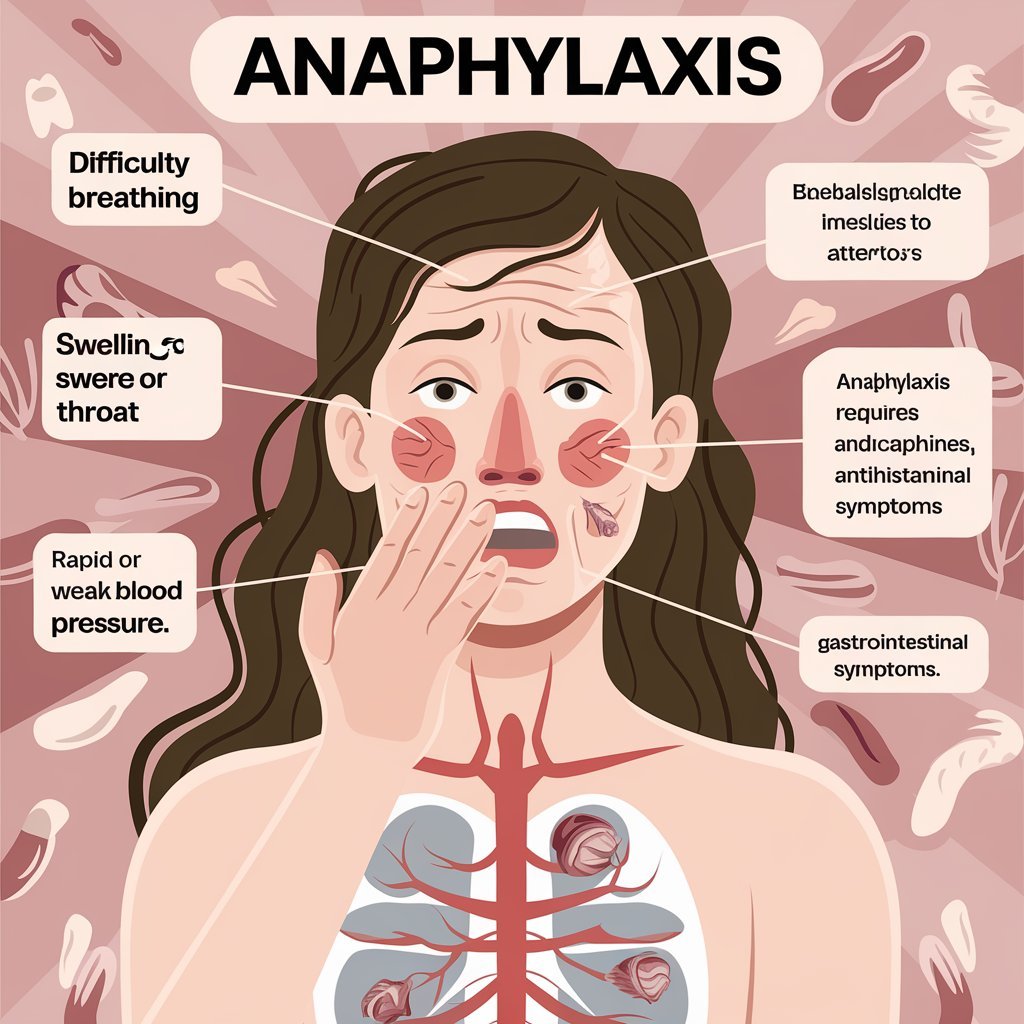
If you have a serious allergy or risk of anaphylaxis, create an emergency plan. Some recommendations include:
- Know your triggers and avoid them if possible
- Read food labels and ingredient lists carefully
- Communicate your allergies when eating out
- Alert your healthcare providers about medication allergies
- Consider wearing a medical ID tag that states your allergies and what to do in the case of a severe allergic reaction
- Take safety precautions if you’re allergic to insect stings, such as wearing shoes and long sleeves and avoiding scented body products
- Always have emergency medications, such as an epinephrine autoinjector, with you (at home, at school, at work, in your vehicle)
- Educate family and friends about your trigger and how to assist you in a severe reaction
- Discuss with your allergist what to do if you have anaphylaxis.
Can You Have Both Anaphylaxis and Allergic Reaction?
It is possible to have anaphylaxis and an allergic reaction at the same time because anaphylaxis is a very severe type of allergic reaction. You may have mild symptoms, such as a runny nose, followed by more serious symptoms, like shortness of breath. If you feel that your symptoms are worsening and could be anaphylaxis, call 911 and seek immediate medical care.
When to Seek Care and Who to Contact
If you have a severe allergic reaction, seek care right away. Call 911 or go to the nearest emergency department.
See your primary care physician and allergist for continued allergy treatment. An allergist is a medical doctor who specializes in diagnosing and treating allergies and immune conditions.They can help develop a treatment plan to reduce allergy symptoms and improve overall quality of life.
A Quick Review
Anaphylaxis is a severe form of allergic reaction. Allergic reactions occur when the immune system of a person becomes hypersensitive to a substance known as an allergen. The allergic reactions may be mild symptoms such as nasal congestion and redness of the skin or more severe symptoms like shortness of breath and fainting.
Common causes of allergic reactions include foods, medications, and insect bites or stings. Knowing your body’s triggers will help you avoid allergens and prevent reactions.
Most allergic reactions are mild or moderate and can be managed at home. Anaphylaxis is a medical emergency that requires immediate treatment. If you suspect you are experiencing anaphylaxis, call 911 and follow your prescribed emergency plan.
